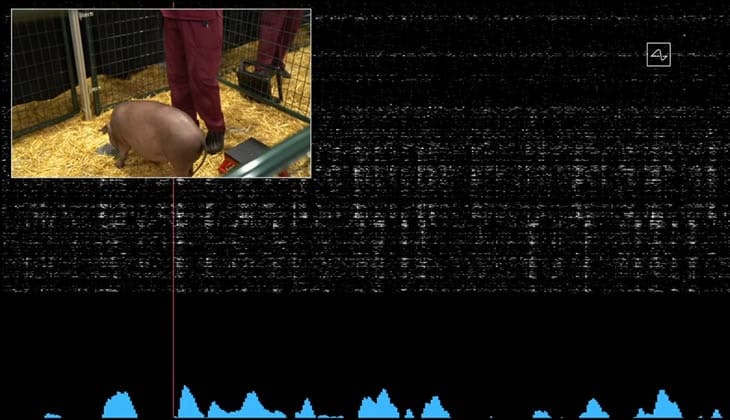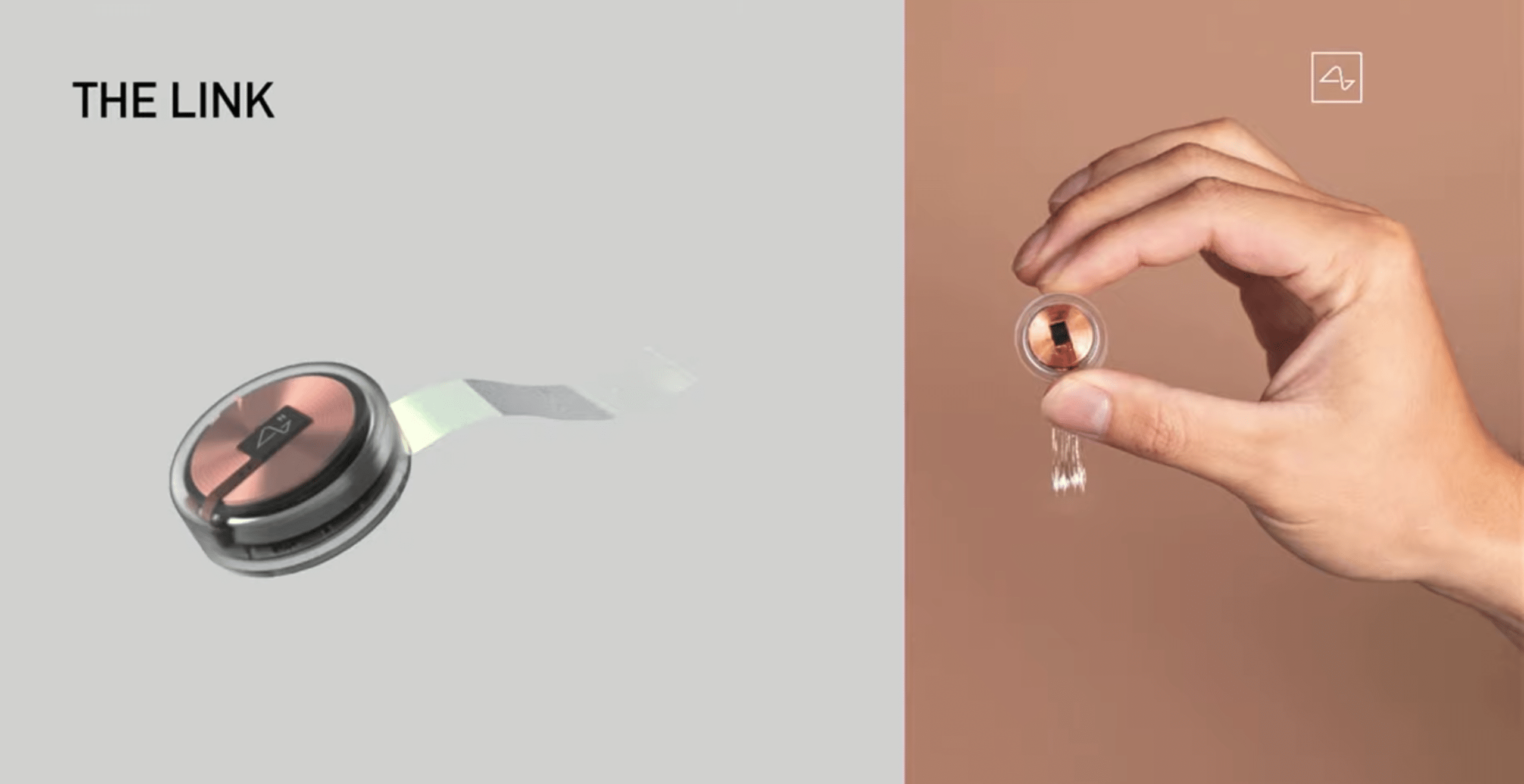Neuroscience continues to know the brain better than Elon Musk

Neuroscience continues to know the brain better than Elon Musk
La medianoche del 28 de agosto del 2020, después de más de 30 minutos, se activó por fin la luz en the Neuralink channel, la empresa de neurotecnología creada por el magnate Elon Musk en 2016. El atractivo símbolo de la compañía, fundido en negro durante los primeros 28 segundos del video, es un recuerdo de aquella larga espera.
" alt="" aria-hidden="true" />
In this event online, Musk presentó el avance conseguido por su empresa durante los últimos 2 años en el desarrollo de un implante cerebral que permite leer la actividad neuronal. El dispositivo, que integra 1.024 electrodos de registro, había sido implantado en el cerebro de cerdos que campaban a sus anchas por el recinto.
Para demostrar su funcionamiento, se utilizaron tres animales: un cerdo no implantado, uno con el dispositivo oculto bajo la piel de su cráneo emitiendo señales sonoras en directo, y un tercero, que había tenido el implante, ya sin él. La idea era evidenciar la seguridad del invento, y habría resultado una actuación estelar si no fuera porque el segundo animal se resistió lo suyo a salir de bastidores.
How does the device work?
Lo que se pudo ver durante la presentación fue la actividad de varias neuronas activándose (firing, en jerga técnica) mientras el animal se movía por el escenario.
La activación de las neuronas aparecía en la pantalla como pequeños puntos blancos. Cada fila representaba la actividad de una neurona; cientos de ellas podían verse ordenadas en una matriz de datos fluyendo de manera continua en tiempo real. Abajo del todo, en azul, figuraba el contaje acumulado de la actividad total.
Mientras el cerdito olisqueaba insistentemente su entorno, se sucedían ondas de shots neuronales coordinados. Más tarde, hacia el minuto 18 del video, se explica cómo, leyendo esta actividad, es posible predecir los pasos de uno de los cerdos implantados caminando en una cinta.

¿Cuál es la novedad?
Todo y nada era nuevo en la presentación.
Es nueva la solución tecnológica de empaquetar 1.024 electrodos de registro en unos cuantos finísimos filamentos que, insertados en el cerebro, pueden aislar la actividad de cientos de neuronas.
Es nueva la tecnología inalámbrica que permite trasmitir en tiempo real tanto la señal como otras medidas de temperatura, presión intracraneal, etcétera (un etcétera literalmente desconocido). No sabemos cuánto dura la batería del prototipo de interfaz cerebro-ordenador (el Link v0.9), pero se puede cargar por inducción, como los relojes digitales modernos.
It is new that the implant can be hidden under the scalp, protecting the wearer's privacy.

Neuroscience ahead of Musk
Pero tal vez no sean tan nuevas las cosas que más pueden impresionar al público general y aquellas con las que Musk jugó al juego de encantamiento. Llevan detrás años de dura y seria investigación científica.
No es nuevo que se pueda leer la actividad de cientos de miles de neuronas a la vez, ni decodificar su mensaje. Sobre todo, si este es relativamente simple u obvio, como el requerido para mover las extremidades de una manera automática.
Tampoco es nuevo que se puedan implantar sistemas inalámbricos. Aunque, eso sí, los más habituales tienen muchos menos canales, son más aparatosos y aparentemente menos eficientes.
No es nuevo que se pueda estimular grupos de neuronas de manera localizada como se muestra en el video hacia el minuto 19, utilizando imagen microscópica de doble fotón para ver la activación de sensores de calcio expresados genéticamente en estas células.
Todas estas cosas son el día a día de algunos laboratorios de investigación en todo el mundo, que se empeñan en descifrar nuestro órgano más complejo. La neurociencia lleva años trabajando en leer y decodificar la actividad neuronal. Los objetivos de ese esfuerzo son claros: entender cómo funciona el cerebro y poder ayudar a tratar algunas de sus enfermedades y accidentes.
Neuroscience applications in humans
La promesa de Musk de empezar a implantar estos dispositivos en breve, una vez recibida la aprobación de la FDA, reflejan solo un nuevo episodio de la competencia en la carrera tecnológica.
Muchas empresas y laboratorios de investigación llevamos años colaborando con neurocirujanos y neurólogos para intentar aplicar estos conocimientos de manera segura y controlada. Ya se usan dispositivos similares para ayudar a personas con lesión cerebral a mover brazos robóticos, implantes de electrodos profundos como tratamiento de la enfermedad de Parkinson o para la predicción de crisis epilépticas.
Gran parte de estos avances han sido posibles por años de trabajo con animales de laboratorio, que han servido para poner a punto la tecnología y desarrollar sus aplicaciones.
Utilizando aproximaciones similares –prototipos vintage a la luz de lo que promete neurociencia ahora– y la inestimable colaboración de los pacientes, se ha podido acceder al registro de la actividad neuronal humana e intentar decodificarla.
No hay nada temible en ello si estamos en las buenas manos: investigaciones financiadas con fondos públicos y privados sometidas a los más estrictos controles. Se trata de entender cómo procesamos la información, de qué forma controlamos nuestros brazos y piernas, cómo generalizamos el conocimiento y representamos el mundo.
Challenges to be overcome in neuroscience
No nos engañemos. Ninguna de estas promesas resulta fácil de alcanzar; no están a la vuelta de la esquina. Son uno de los retos neurotecnológicos del momento.
La idea de Musk de que estos dispositivos pueden cumplir funciones como avisarnos de un posible ataque al corazón, un ictus cerebral o cualquier otra amenaza parecida, así como ayudarnos a tocar música o encender el coche eléctrico, es solo el punto de fuga de un relato futurista.
Todo avance es un arma de doble filo. Nada se dijo en la presentación de las complicaciones de implantar un cuerpo electrónico extraño en el cerebro; un medio acuoso y corrosivo por antonomasia. Ni de los mecanismos de defensa que nos protegen y que necesariamente formarán una cicatriz glial en la materia gris de cerdos y hombres, encapsulando electrodos y promoviendo infecciones, sin importar la especie.
Tampoco se habló en la presentación de los aspectos éticos asociados, que entre todos tenemos que proteger. Y mucho menos se mencionó que esto no es más que un hito en un camino que es imposible recorrer en solitario porque la naturaleza de los retos, las preguntas y las consecuencias se desbordan en todas direcciones: curar la depresión, manipular la conciencia o editar las memorias son palabras mayores.
YOU MAY ALSO BE INTERESTED IN: CREATING COLLAGES AND PRESENTATIONS


Write us a comment: